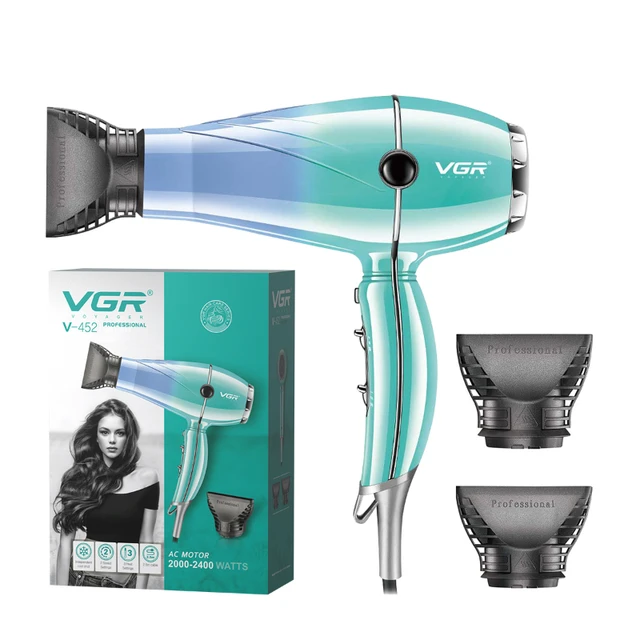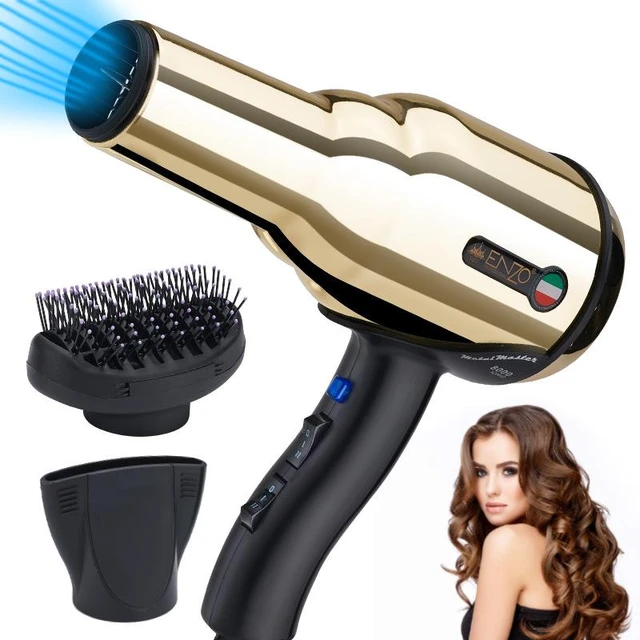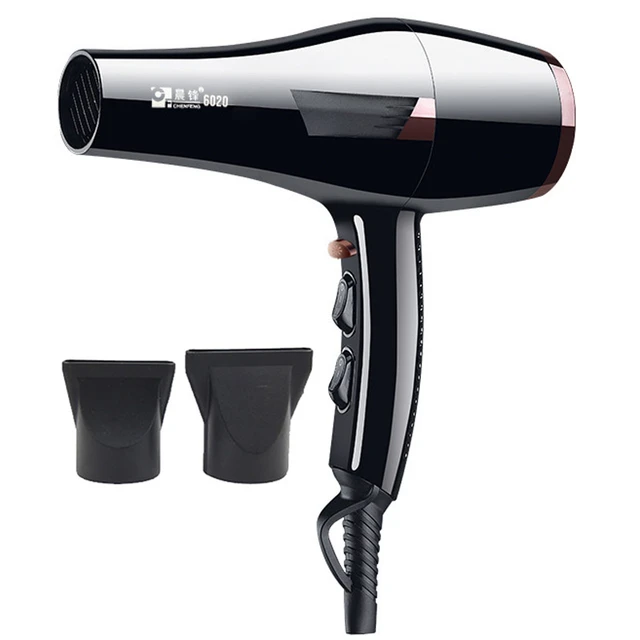Introduction to Hair Dryer Brushes
A hair dryer brush is revolutionizing the way we dry and style our hair. Combining the functions of a hair dryer and a round brush, this versatile tool promises smooth, voluminous locks in less time than traditional methods. If you’re looking to streamline your hair styling routine without sacrificing results, learning how to use a hair dryer brush is essential. This guide will equip you with everything you need to know, from selecting the right brush to mastering advanced styling techniques.
What is a Hair Dryer Brush?
Understanding the Technology
A hair dryer brush is designed with bristles and a heated barrel, allowing you to both dry and style your hair simultaneously. The barrel’s heat helps to lock in moisture, while the bristles help to detangle and smooth the hair. Adjustable heat settings and airflow options cater to different hair types, making this tool suitable for a wide range of users.
Types of Hair Dryer Brushes
- Hot Air Brushes: These typically come in either paddle or round shapes. Paddle brushes cover more surface area, making them ideal for straightening and smoothing. Round brushes add volume and curl, which is perfect for achieving bouncy hairstyles.
- Two-in-One Brushes: These models are versatile, allowing you to switch from drying to styling with ease. They usually have interchangeable heads for different styles.
- Ionic Brushes: Ionic technology helps to minimize frizz and static, making your hair look shinier and healthier. If your hair tends to be frizzy, consider investing in an ionic brush.
Choosing the Right Brush for Your Hair Type
Understanding your hair type is critical in selecting the right hair dryer brush:
- Fine Hair: Opt for a brush with a smaller barrel and lower heat settings. This will prevent damage while delivering the volume you desire.
- Thick Hair: A larger barrel with higher heat settings is best for thick hair. This allows for faster styling without excessive heat exposure.
- Curly Hair: A round brush can enhance your natural curls or waves. Aim for a brush that allows for good grip and control.
Other Factors to Consider
When choosing a hair dryer brush, you might also want to consider:
- Barrel Material: Ceramic barrels distribute heat evenly, while tourmaline-infused barrels help to reduce frizz.
- Brushing Technique: Different bristle types (nylon vs. boar bristles) can affect the styling outcome. Nylon bristles are typically better for detangling, while boar bristles help distribute natural oils for added shine.
Preparing Your Hair for Styling
Step 1: Wash and Condition Your Hair
Start by washing your hair with a suitable shampoo and conditioner. For best results, choose products that align with your hair type—hydrating for dry hair, volumizing for fine hair, etc. Rinse thoroughly to remove all product residue.
Step 2: Towel Dry
After washing your hair, gently towel dry it. Avoid rubbing your hair vigorously, as this can cause breakage and frizz. Instead, pat your hair dry and remove excess moisture.
Step 3: Apply Heat Protectant
Before styling, it’s crucial to apply a heat protectant product. This will create a barrier between your hair and the heat from the dryer brush, preventing damage and maintaining hair health.
Step 4: Detangle Your Hair
Using a wide-tooth comb or a detangling brush, section your hair and gently remove any knots and tangles. Starting from the tips and working your way up prevents unnecessary breakage.
How to Use a Hair Dryer Brush
Step 1: Section Your Hair
Dividing your hair into manageable sections makes styling easier. Use hair clips to separate your hair into four main sections—two at the back and two at the front.
Step 2: Choose the Right Heat Setting
Plug in your hair dryer brush and select the appropriate heat setting for your hair type. If you have fine or damaged hair, opt for a lower heat setting. For thick or coarse hair, you may require a higher temperature.
Step 3: Start with the Undercut Sections
Starting with the back sections, take a smaller subsection of hair (about 1-2 inches wide). This allows for better control and more thorough drying.
Step 4: Position the Brush
Hold the hair dryer brush vertically with the barrel facing the roots of your hair. This will help lift the hair for added volume.
Step 5: Dry and Style
Slowly move the hair dryer brush down the length of your hair. As you pull the brush through, rotate it slightly away from your face to achieve a natural curl or wave at the ends. Ensure you spend enough time on the sections for optimal drying and styling.
Step 6: Repeat the Process
Continue working your way through each section of hair until it is completely dry and styled to your liking. You can switch between smooth and voluminous styles depending on how you position and move the brush.
Step 7: Cool Down
Most hair dryer brushes come with a cool setting. Once you complete your styling, switch to the cool setting and run the brush through your hair one final time. This helps to set your style and adds shine.
Step 8: Final Touches
Once your hair is fully styled, apply a lightweight hair serum or finishing spray to lock in your look. This will help to control frizz and add shine.
Advanced Styling Techniques with a Hair Dryer Brush
Creating Volume
To elevate your styling game, consider these advanced techniques for achieving that salon-quality volume:
- Lift at the Roots: When styling, focus on lifting the roots by keeping the brush close to the scalp. This creates a natural bounce and fullness.
- Using Clips: While you style each section, pin them up to set the volume further. Allow them to cool before you release them for maximum lift.
Adding Waves
If you want beachy waves, follow these steps:
- Twist the Brush: As you dry, slightly twist the brush at the ends of your hair. This will create more texture and enhance the wave.
- Alternate Directions: For a more natural look, alternate the direction you curl your hair in for each section—some sections away from your face, and some towards it.
Straightening Techniques
For a sleek, straight finish, try these techniques:
- Slow Movement: Glide the brush slowly down the hair shaft while applying downward pressure. The longer you hold the brush on each section, the straighter it will become.
- Pulling Teeth: You can use the bristles of the brush to gently pull through the hair while drying, which helps smooth the cuticle and eliminate frizz.
Touch-Up Strategies
Even after you’ve gone through the entire styling process, you might find some areas need touch-ups. Here’s how to address that:
- Quick Touch-Up: Use the brush with a high heat setting to touch up sections that remain damp.
- Contextual Styling: For specific events, you may only want to focus on certain sections—like adding more volume to the crown or smoothing out the ends. Use the brush accordingly.
Maintenance of Your Hair Dryer Brush
Taking care of your hair dryer brush will prolong its life and ensure it works efficiently:
Cleaning the Brush
Removing Hair
Regularly remove hair strands that accumulate around the bristles. This prevents the build-up of product and keeps your styling effective.
Deep Cleaning
Periodically, give your brush a deeper clean to remove dust and residue. Fill a bowl with warm soapy water and soak the bristles for a few minutes, then rinse thoroughly and air dry.
Storing Your Brush
Store your hair dryer brush in a cool, dry place away from humidity. Avoid wrapping the cord tightly around the brush, as this can damage the internals.
 Troubleshooting Common Issues
Troubleshooting Common Issues
Brush Not Heating
If your brush doesn’t heat up, check the power source and ensure that it is correctly plugged in. If it still doesn’t work, consult the user manual for troubleshooting tips.
Hair Getting Stuck
Should your hair get caught in the bristles, use a detangling spray to make removal easier. Always ensure your hair is dry enough to avoid this issue.
Inconsistent Results
If you find that your styles aren’t consistent, it could be a matter of technique or temperature. Experiment with different settings and try to find the right method that works for your hair type.
Conclusion
Learning how to use a hair dryer brush opens up a world of styling possibilities while cutting down on time and effort. By understanding the tool’s functions, selecting the right brush, and mastering different techniques, you can achieve salon-quality results right at home. With consistent practice and the right maintenance, your hair dryer brush can become your go-to styling tool for years to come. Get ready to enjoy beautiful, voluminous hair every day!

